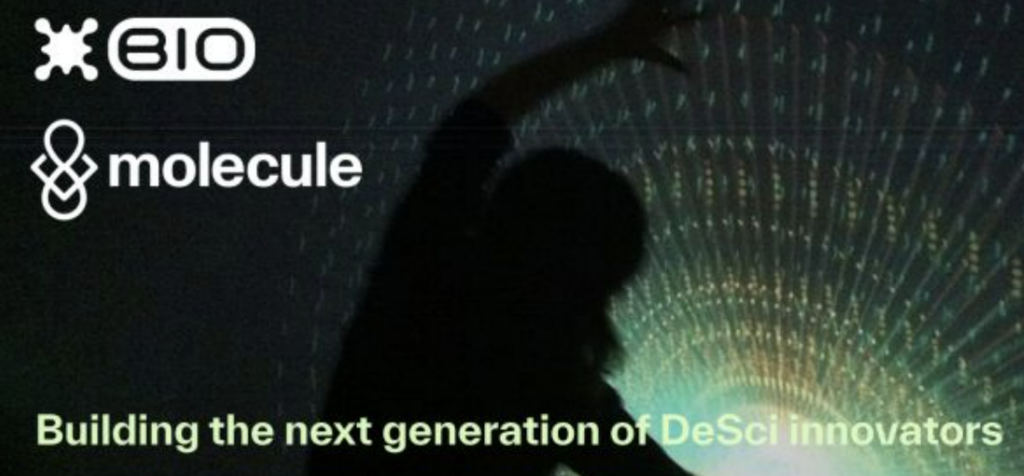First assigment while being part of the DeSci EDU course offered by Molecule and Bio

DeSci, or Decentralized Science, foremost is a social movement attempting to correct several issues affecting Traditional Science (TradSci). Since the inception of the Open Science (OpenSci) movement, a lack of monetary incentives hampered its success as a first attempt at such correction. OpenSci truly never advanced past the creation of open databases and open access journals. Its most promising component, citizen science, to my judgement never completely took off. Even for the most developed aspect of OpenSci, open access journals, to publish in these the authors need to pay additional costs which are more often than not higher than in closed journals. Distributed Ledger Technology (DLT), public blockchains, and Web3 offer a new opportunity to achieve the yearned changes to the way science is (i) funded, (ii) executed, and (ii) communicated. The reason this modern opportunity is vital is since nowadays science is in a more regrettable status than it was when the OpenSci movement emerged.
Today TradSci has many calamities preventing advance progression and this renders it essentially futile when attempting to handle the genuine world issues which are collapsing our socio-economic and socio-ecological systems. Among the TradSci crises are: the lack of research reproducibility, rampant academic fraud, desperate need of mentoring, shortage of intellectual depth connecting across disciplines and a talent drain emergency. The purpose of DeSci is to redress these issues, it is a new attempt empowered by a new technology, namely DLT. Currently the space is developing fast and it is organized across four verticals: (i) funding and IP, (ii) research communities/DAOs, (iii) publishing & reproducibility, and (iv) identity and reputation. Different players within the space focus on developing products and services around these aspects but as one of the most successful applications of DLT is Distributed Finance (DeFi), it is not surprising that the decentralization of funding has been the most developed so far. This has been done by interfacing DeFi with IP by means of tokenization which has the limitation of only being applicable to applied science which is most likely to produce IP. For this reason, research communities organized as DAOs have governance mechanisms which are usually linked to research funding and IP markets. The execution of research however, where the issues of reproducibility and a shortage of intellectual depth exist, has not been entirely decentralized or encouraged. Typically, only the ownership of data is discussed. Nevertheless, What exactly is data? Data holds meaning only within the context of a foundational theoretical framework (narrative); without this, they are merely sequences of symbols and numbers. A noisy stream of pseudo-data can jam any database conceivable, whether centralized or decentralized. Certain initiatives driven by AI-agent optimism are emerging, including Proof of Knowledge (PoK) and/or Proof of Invention (PoI); nonetheless, I believe an essential element is missing. In the scientific process, we engage in both “day science” and “night science” along with numerous playful lab activities/experiences that resemble art and gaming more than the rigorous implementation of scheduled experiments, data gathering, or discourse on proposal/papers.
Night science1 is an essential part of science. To achieve this, we require secure environments that foster it. Historically, prior to the crisis, this safe space was a supporting lab operated by an experienced
researcher/academic whose main goal was to guide young scientists, as both good and bad science are pursuits that span generations. It is in these environments that fresh concepts are formulated and understood. Science is an evolutionary process2 in which ideas gather evidence, gain acceptance, build prestige and are eventually expressed and translated into concrete technology (products). This is a cycle, in which normal, frontier and revolutionary science, function as wheels of advancement that produce technology3. This is the wheel that is currently damaged. To address the issue, we require not only DAOs centered on particular inquires, narratives, and products (day science) but also to enhance these initiatives with a Decentralized Public Infrastructure Network (DePIN) of laboratory environments where playful exploration, curiosity, natural history and unstructured hacker/maker activities can provide a chance for night science to complement the practice of day science. In my opinion, this is the most overlooked subject in DeSci.
- Yanai, I., Lercher, M. (2019) Night science. Genome Biol 20, 179. https://doi.org/10.1186/s13059-019-1800-6 ↩︎
- Hull D. (1988) Science as a Process: An Evolutionary Account of the Social and Conceptual Development of Science. University of Chicago Press: Chicago. ISBN 0-226-35060-4 ↩︎
- Kuhn, T. S. (1962). The Structure of Scientific Revolutions. University of Chicago Press: Chicago. ISBN 9780226458113 ↩︎